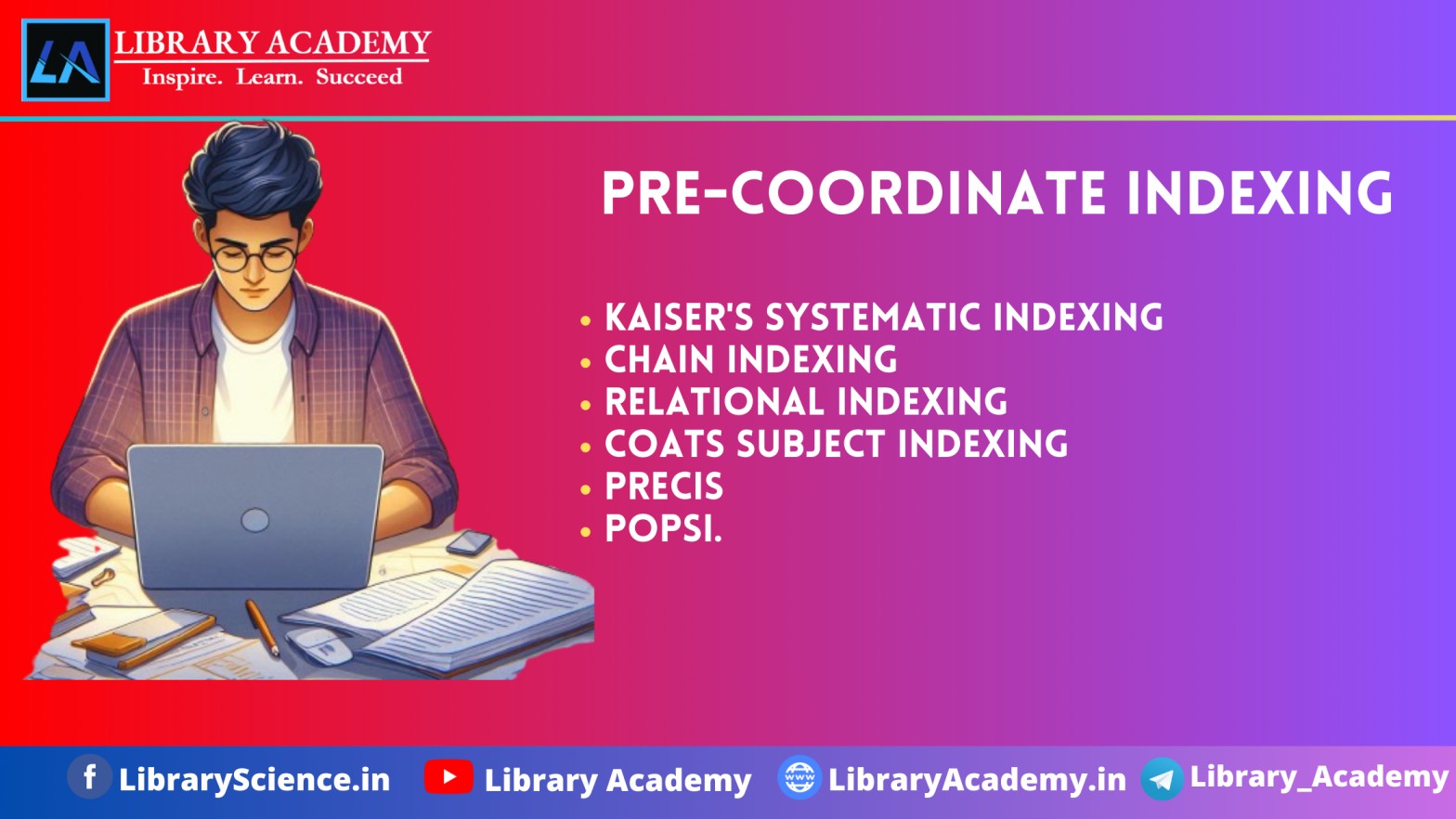Pre-coordinate indexing is an information retrieval method where terms describing the content of a document are combined into a single, structured phrase or string at the time of indexing. This indexing method organizes terms in a predetermined sequence, which often reflects their natural relationships or the logical hierarchy of the subject matter.
Examples of Pre-coordinate indexing are Kaiser’s Systematic Indexing, Chain Indexing, Relational Indexing, Coats Subject Indexing, PRECIS, & POPSI.
For example, in a pre-coordinate system, a document about “lung cancer treatment” might be indexed as a single phrase like “Lung Cancer—Treatment,” with the words ordered to follow the subject-subject relationship. This approach is often used in library catalogs, thesauri, and some databases where the controlled vocabulary allows users to find documents by searching using specific, pre-combined terms.
1. Kaiser’s Systematic Indexing (1911)
Developed by J. Kaiser, this method organizes index terms based on the fundamental categories of “concrete,” “process,” and “place.” Kaiser’s approach uses these categories to structure subject descriptions systematically, making it easier to locate information on industrial and technical subjects.
2. Chain Indexing (1934)
Created by Dr. S.R. Ranganathan, chain indexing involves linking terms based on a hierarchical order, which he called a “chain.” Each entry term is chained with its broader or narrower terms, following a sequence derived from the facets of the subject. This method is closely associated with Ranganathan’s Colon Classification.
3. Relational Indexing (1950)
Developed by J.E.L. Farradane, relational indexing uses relationships between terms to define the context of a subject. It introduces “relators” (e.g., “of,” “by,” “for”) to clarify how terms connect, allowing for a more nuanced understanding of complex subjects, especially in scientific and technical fields.
4. Coates Subject Indexing (1963)
E.J. Coates designed this method to simplify indexing by reducing the number of terms and grouping them into categories, such as actions, agents, and properties. Coates’s system is practical and suitable for large collections, emphasizing consistency and efficiency in term selection.
5. PRECIS (Preserved Context Indexing System) (1974)
Developed by Derek Austin, PRECIS organizes terms in syntactic order, capturing the logical context of each term within a subject phrase. It arranges terms based on grammar and context, making the system particularly effective for subject headings in library catalogs.
6. POPSI (Postulate-Based Permuted Subject Indexing) (1969)
Created by G. Bhattacharya, POPSI applies Ranganathan’s theories to post-coordinate indexing. It uses postulates and principles to combine subject terms in a flexible way, allowing the terms to permute based on the search requirements. This system is suitable for complex subjects in diverse fields.
Key Characteristics
- Controlled Vocabulary: Uses a controlled set of terms, often from a thesaurus, to maintain consistency.
- Combination of Terms: Terms are combined at the point of indexing, which simplifies retrieval by providing predefined phrases.
- Hierarchy or Sequence: Terms are ordered hierarchically or sequentially to match how users might logically search.
Advantages
- Precise Searches: Because terms are combined thoughtfully, pre-coordinate indexing can produce precise search results.
- Contextual Clarity: The relationship between terms is established in advance, which can help avoid ambiguity.
Disadvantages
- Limited Flexibility: Users must search using the exact or closely matching terms, as the system relies on a fixed vocabulary.
- Complexity in Maintenance: Maintaining an extensive pre-coordinate index can be challenging, especially with evolving topics.
Join Our Social Community for Updates

